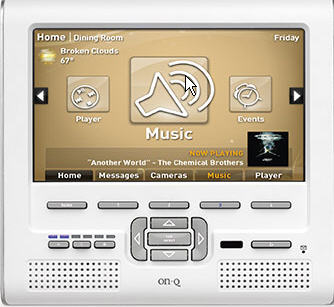
The 21st century will be the century of the 'smart home', where your home and your portable technology all interact seamlessly with one another.
In the 21st century, smart homes won't be just for Bill and Melinda Gates, who had to spend $100 million to enjoy advanced technology, they will be for people across a variety of incomes, just like traditional homes have been until now. Rather than have all of these different devices and the headache of getting them to work together, a cross-platform tool will work with whatever you are accessing, such as a panel or a smartphone or a TV.
But they will be able to do more than control lighting or a burglar alarm, like has been done in the past. The truly smart home has lifestyle benefits as well and if you are in places like Florida or Texas or California, you can get access to the future right now: homebuilder Taylor Morrison, Inc. calls their version of the 21st century The Interactive Home - if you want to make sure the kids are doing their homework and are not on a Playstation, you can find out easily. If you need to remind them to take out the trash, you can program that in. Decades ago, custom answering machine messages were popular and the 21st century will bring that back - you'll be able to leave custom messages for people based on whether you know them or not and they can leave a message for you as well.
CNN estimates that smart homes will grow from a $10 billion business this year to a $44 billion industry by 2017. It will happen because there will be no more thinking about Bluetooth or Wi-Fi or broadband, the smart home hub will eliminate the chaos. Smart homes use mesh networks, so there is always more than one way that a command can be received, even over radio or electrical lines inside the walls.
There can't be an Internet Of Things that doesn't include homes and that is why vendors are taking the concept from an abstract marketing idea of the 1950s to a 2014 reality. Smart home devices can be modular, like many people in existing homes, though that will be a barrier to some who don't want to deal with replacing existing technology, and they are almost certain to be part of a new home design, like leading home builders are doing today.
Image: Taylor Morrison, Inc.
Bonus video:




Comments